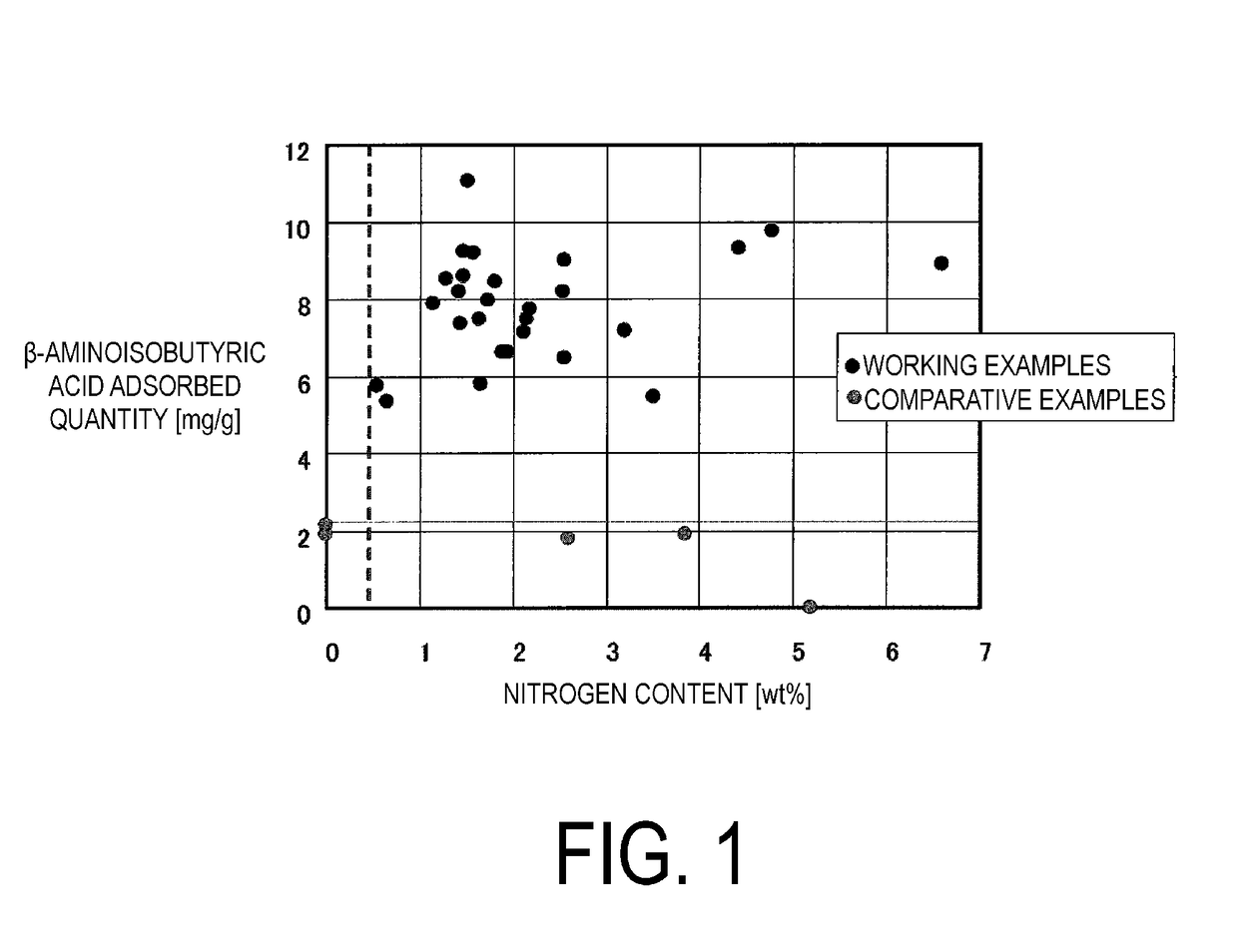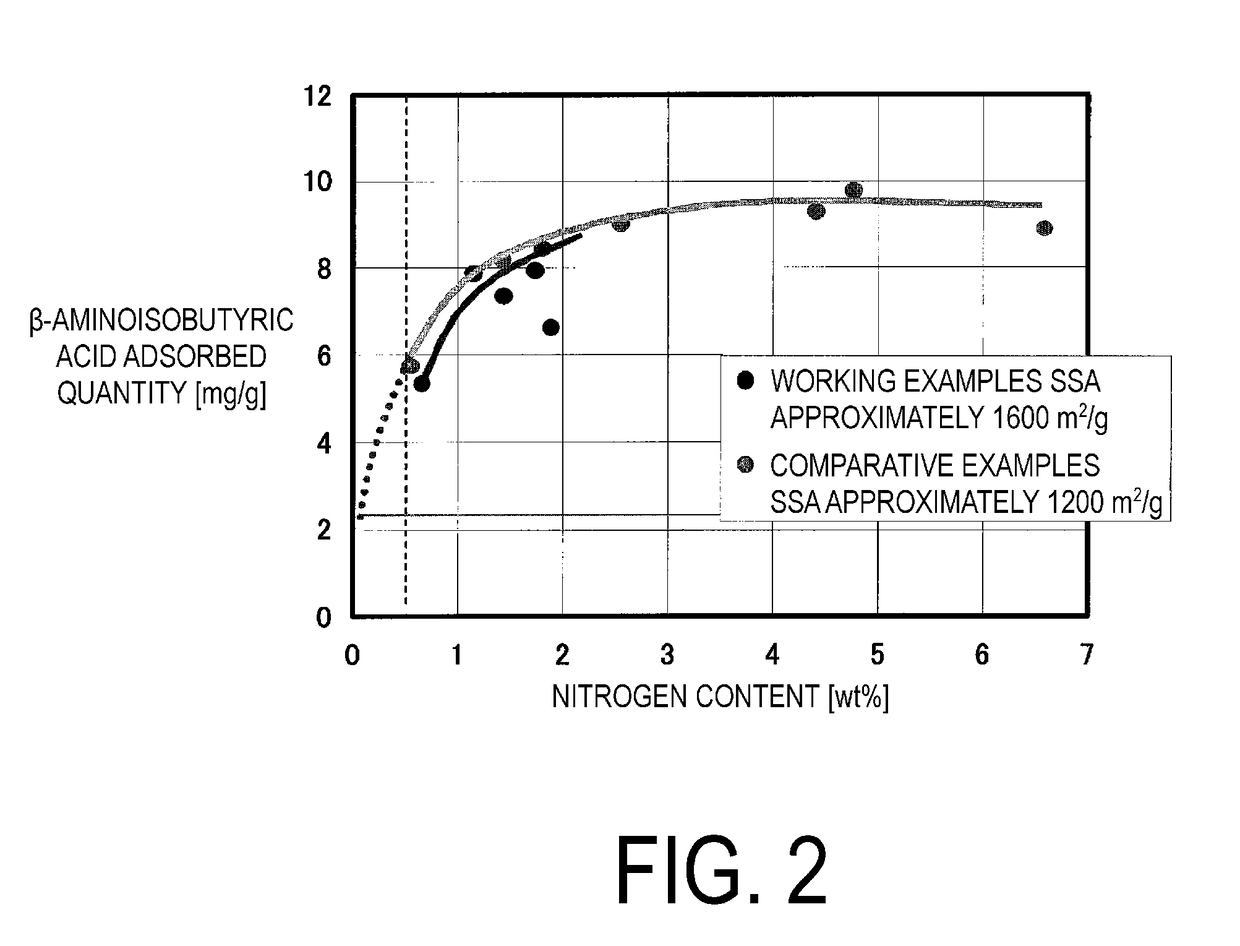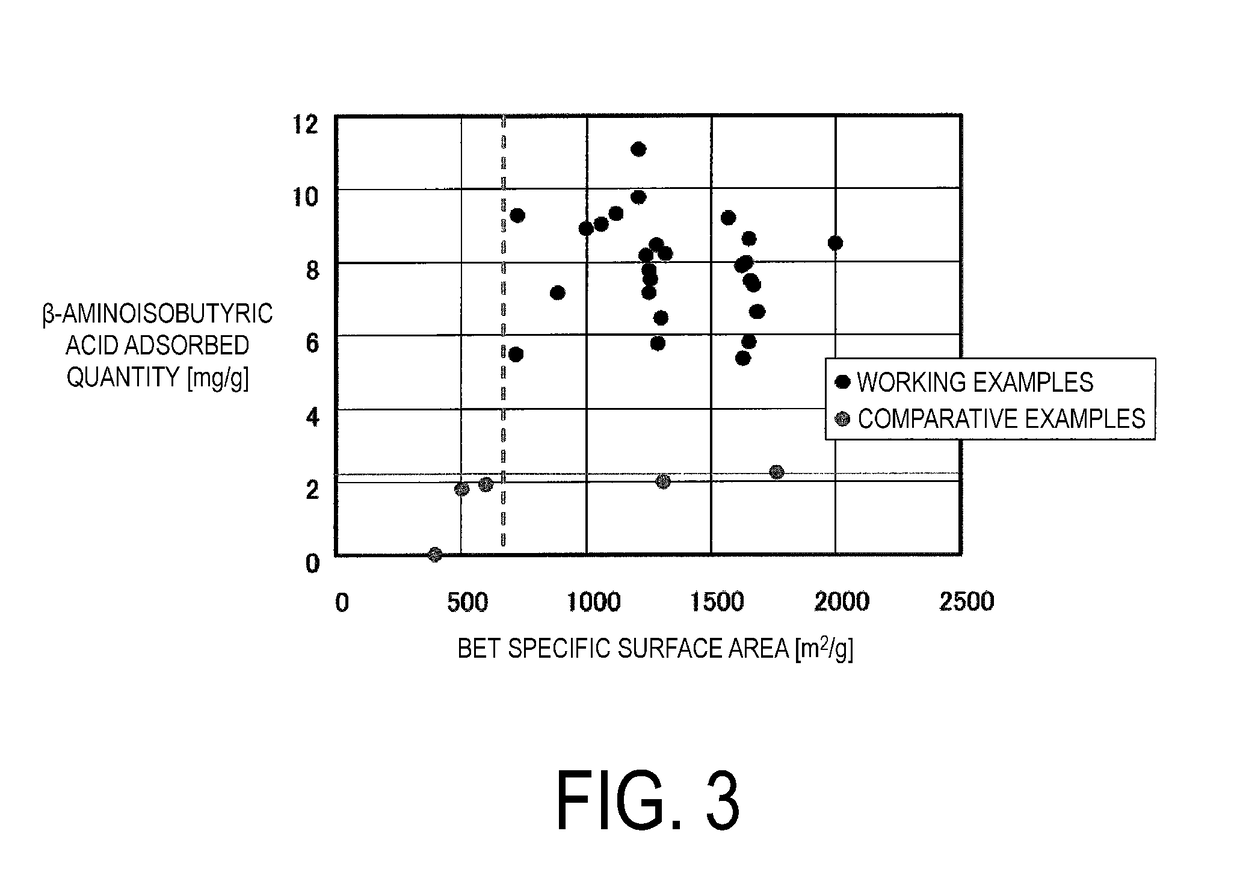Orally administered adsorbent, therapeutic agent for renal disease, and therapeutic agent for liver disease
a technology of adsorbent and adsorption ability, which is applied in the direction of antinoxious agents, drug compositions, other chemical processes, etc., can solve the problems of impaired consciousness, high physical, mental and economic burden on the patient, and the hemodialysis-type artificial kidneys are not necessarily satisfactory, etc., and achieve excellent adsorption ability and high efficacy. , the effect of improving the adsorption ability of uremic substances
- Summary
- Abstract
- Description
- Claims
- Application Information
AI Technical Summary
Benefits of technology
Problems solved by technology
Method used
Image
Examples
working example 1
[0065]4500 g of deionized water, 0.9 g of sodium nitrite, and 6.8 g of Metalose 60SH-15 (Shin-Etsu Chemical Co., Ltd.) were put in a 10-L polymerization reactor. To this were added 376 g of styrene, 1049 g of divinylbenzene (57% divinylbenzene and 43% ethylvinylbenzene), 75 g of acrylonitrile, 8.7 g of 2,2′-azobis(2,4-dimethylvaleronitrile), and 525 g of hexane as a porogen, and the interior of the system was then replaced with nitrogen gas. This two-phase system was heated to 55° C. while stirring at 180 rpm, and then held in that state for 20 hours. The obtained resin was washed with water and filtered, and then dried for 16 hours at 180° C. under nitrogen flow, to produce a spherical porous synthetic resin having an average particle size of 197 μm.
[0066]The obtained spherical porous synthetic resin was put in a reaction tube with a grating, and infusibility treatment was performed in a vertical tube furnace. As the infusibility treatment, dry air was made to flow from bottom to t...
working example 2
[0067]Spherical porous synthetic resin was prepared by repeating the resin preparation operations of Working Example 1 except that 301 g of styrene and 150 g of acrylonitrile were used. The average particle size of the obtained spherical porous synthetic resin was 193 μm.
[0068]Additionally, spherical activated carbon was prepared by repeating the infusibility treatment and activation treatment of Working Example 1 except that the above spherical porous synthetic resin was used, and activation treatment was performed until the BET specific surface area reached 1630 m2 / g. The characteristics of the obtained spherical activated carbon are shown in Table 1.
working example 3
[0069]Spherical porous synthetic resin was prepared by repeating the resin preparation operations of Working Example 1 except that 151 g of styrene and 300 g of acrylonitrile were used and the stirring rotational frequency of the two-phase system was 168 rpm. The average particle size of the obtained spherical porous synthetic resin was 152 μm. Additionally, spherical activated carbon was prepared by repeating the infusibility treatment and activation treatment of Working Example 1 except that the above spherical porous synthetic resin was used, and activation treatment was performed until the BET specific surface area reached 1620 m2 / g. The characteristics of the obtained spherical activated carbon are shown in Table 1.
PUM
| Property | Measurement | Unit |
|---|---|---|
| particle size | aaaaa | aaaaa |
| particle size | aaaaa | aaaaa |
| particle size | aaaaa | aaaaa |
Abstract
Description
Claims
Application Information
 Login to View More
Login to View More - R&D
- Intellectual Property
- Life Sciences
- Materials
- Tech Scout
- Unparalleled Data Quality
- Higher Quality Content
- 60% Fewer Hallucinations
Browse by: Latest US Patents, China's latest patents, Technical Efficacy Thesaurus, Application Domain, Technology Topic, Popular Technical Reports.
© 2025 PatSnap. All rights reserved.Legal|Privacy policy|Modern Slavery Act Transparency Statement|Sitemap|About US| Contact US: help@patsnap.com



